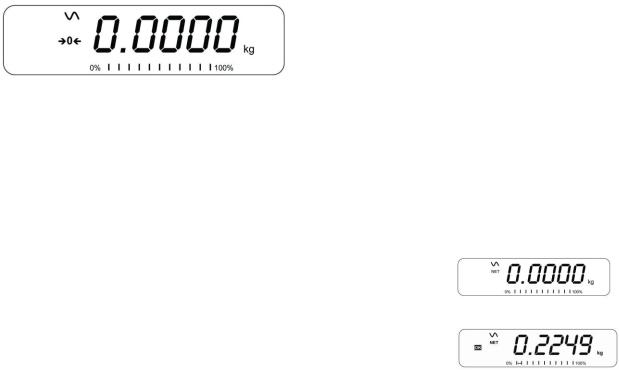Cole-Parmer IPS 30, IPS 50, IPS 100, IPS 150, IPS 300 Instruction Manual

IPS Series |
Bench Scales |
User Manual |
xxxxxxxxxx - Revision __, June 2017 |
CONTENT
1.0 |
SETTING UP AND TURNING ON THE SCALES |
................................ 5 |
2.0 |
OPERATION ........................................................................................ |
5 |
2.1 |
ZEROING .......................................................................................... |
5 |
2.2 |
TARING............................................................................................. |
5 |
2.3 |
PARTS COUNTING .......................................................................... |
6 |
2.4 |
PERCENT WEIGHING ...................................................................... |
6 |
2.5 |
ANIMAL (Dynamic) WEIGHING......................................................... |
8 |
2.6 |
ACCUMULATED TOTAL................................................................... |
9 |
3.0 |
RS-232 SPECIFICATION ................................................................... |
10 |
4.0 |
CALIBRATION.................................................................................... |
11 |
5.0 |
SPECIFICATIONS.............................................................................. |
13 |
6.0 |
ERROR MESSAGES.......................................................................... |
14 |
7.0 |
MENU STRUCTURE .......................................................................... |
15 |
8.0 |
WARRANTY INFORMATION ............................................................. |
16 |
P a g e 3
P a g e 4

1.0SETTING UP AND TURNING ON THE SCALES
There is a pillar which must be attached to the base frame first using the 4 bolts supplied. The pillar is secured to the bracket using 2 sets of screws. Then place the platform in the base. Level the scale by adjusting the four feet. Attach the indicator module to the pillar by sliding it over the bracket with the flanges engaged in the groves on the base. Attach the cable from the base to the connector on the rear of the indicator. Attach the power to the indicator.
After completion of setting up, press the [On/Off] key on the rear of the indicator. The software revision number will be displayed followed by a self-test showing all digits before the zero is displayed along with the unit of weight that was selected last.
NOTE: The IPS can be operated from the rechargeable battery. With a single load cell and backlight disabled the life is approximately 70 hours before needing to be recharged. The battery should be charged for 12 hours for full capacity.
2.0OPERATION
2.1ZEROING
You can press the [Zero] key at any time to set the zero point from which all other weighing and counting is measured. The scales have an automatic re-zeroing function to account for minor drifting or accumulation of material on a connected platform. However you may need to press [Zero] to re-zero the indicator if small amount of weight is still shown when the platform is empty.
2.2TARING
To determine a weight of sample which is using a container, you need to tare the empty container. IPS scales supply two methods of tare: manual tare and preset tare.
Manual Tare
Zero the indicator by pressing [Zero]. The zero indicator will be on. Place a container on the pan.
Press [Tare] when the reading is stable. The weight that was displayed is stored as the tare value, leaving zero on the display. The stable and Net indicator will be on.
As a sample is added only the weight of the product will be shown. The indicator could be tared a second time if another type of product was added to the first one.
Press [Tare] or [Zero] to remove the tare value and display zero. The Net indicator will disappear.
P a g e 5

Preset Tare
When the indicator or scale is at zero with no weight on the platform it is possible to enter a preset tare. First zeroing the scale, enter a value using the numeric keys. Press [Tare] to tare the indicator. The value that was entered is stored as the tare value and it is subtracted from the display, leaving a negative number on the display.
To change the weighing unit press the [Unit] key. The only alternative weighing unit is pounds.
2.3PARTS COUNTING
The scale can be used to count parts based on the average weight of a sample weighed. If a container is to be used, place this container on the platform before entering parts counting and press [Tare]. Press [Cnt] to enter the Parts Counting mode.
The display will show the last sample size used. For example, “10 Pcs”. To change the sample size, you can press [CE] to clear the last values and then enter the value 20 using the numeric keypad.
Place the right number of parts on the platform. Then press [Cnt] to determine an average piece weight. After the sample has been weighed the scale will count any other parts added by applying the average piece weight to the weight of the parts to be counted.
During parts counting the display can be changed to show the net weight, unit weight and number of parts by each time pressing the [Func] key.
To count a different sample quantity, press the [Count] key. And operate as above. To return to weighing, press [Unit] when is displayed.
NOTE: If the parts are too light to measure accurately, the count may become faulty. It is suggested that the samples to be weighed should each weigh more than the resolution of the indicator.
2.4PERCENT WEIGHING
The scale will use a mass on the platform as the 100% reference weight or input a reference weight using the keypad.
Steps:
If using a reference weight (or object) as your 100% reference, add the weight to the platform. Press [Func]. The first option is “FUnC 1”, press the [Func] key 3 more times to display “FUnC 4”
Press the [Tare] key. “F4 PCt” will be displayed. Press [Tare] again to enter percent weighing. The scale will set the sample mass on the platform as 100% reference weight.
NOTE: If there is no reference weight on the pan and percent weighing function is entered, pressing [Tare] again will return the indicator to normal weighing.
Remove the sample weight. Then any other weight placed on the platform will be displayed as a percentage of the original sample.
P a g e 6
